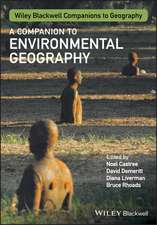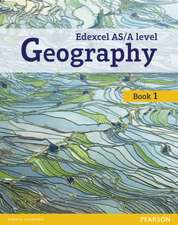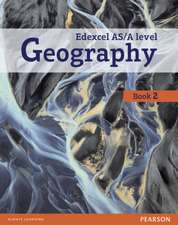Information, Place, and Cyberspace: Issues in Accessibility: Advances in Spatial Science
Editat de Donald G. Janelle, David C. Hodgeen Limba Engleză Paperback – 7 dec 2010
| Toate formatele și edițiile | Preț | Express |
|---|---|---|
| Paperback (1) | 949.42 lei 6-8 săpt. | |
| Springer Berlin, Heidelberg – 7 dec 2010 | 949.42 lei 6-8 săpt. | |
| Hardback (1) | 955.70 lei 6-8 săpt. | |
| Springer Berlin, Heidelberg – 26 iul 2000 | 955.70 lei 6-8 săpt. |
Din seria Advances in Spatial Science
-
 Preț: 368.92 lei
Preț: 368.92 lei - 18%
 Preț: 963.47 lei
Preț: 963.47 lei - 18%
 Preț: 948.16 lei
Preț: 948.16 lei - 18%
 Preț: 947.67 lei
Preț: 947.67 lei - 18%
 Preț: 940.72 lei
Preț: 940.72 lei - 18%
 Preț: 954.45 lei
Preț: 954.45 lei - 15%
 Preț: 646.62 lei
Preț: 646.62 lei - 18%
 Preț: 959.50 lei
Preț: 959.50 lei - 18%
 Preț: 956.33 lei
Preț: 956.33 lei - 18%
 Preț: 949.23 lei
Preț: 949.23 lei - 15%
 Preț: 646.75 lei
Preț: 646.75 lei - 15%
 Preț: 643.99 lei
Preț: 643.99 lei - 18%
 Preț: 955.40 lei
Preț: 955.40 lei - 15%
 Preț: 643.00 lei
Preț: 643.00 lei - 15%
 Preț: 644.49 lei
Preț: 644.49 lei - 18%
 Preț: 953.35 lei
Preț: 953.35 lei - 18%
 Preț: 956.03 lei
Preț: 956.03 lei - 15%
 Preț: 647.27 lei
Preț: 647.27 lei - 15%
 Preț: 638.24 lei
Preț: 638.24 lei - 18%
 Preț: 961.23 lei
Preț: 961.23 lei - 18%
 Preț: 954.93 lei
Preț: 954.93 lei - 15%
 Preț: 643.48 lei
Preț: 643.48 lei - 18%
 Preț: 955.70 lei
Preț: 955.70 lei - 15%
 Preț: 650.86 lei
Preț: 650.86 lei - 15%
 Preț: 650.04 lei
Preț: 650.04 lei - 15%
 Preț: 648.42 lei
Preț: 648.42 lei - 18%
 Preț: 960.30 lei
Preț: 960.30 lei - 18%
 Preț: 948.29 lei
Preț: 948.29 lei - 18%
 Preț: 958.07 lei
Preț: 958.07 lei - 18%
 Preț: 950.66 lei
Preț: 950.66 lei - 18%
 Preț: 956.03 lei
Preț: 956.03 lei - 15%
 Preț: 643.65 lei
Preț: 643.65 lei - 18%
 Preț: 956.99 lei
Preț: 956.99 lei - 18%
 Preț: 956.81 lei
Preț: 956.81 lei - 18%
 Preț: 958.73 lei
Preț: 958.73 lei - 18%
 Preț: 959.98 lei
Preț: 959.98 lei - 18%
 Preț: 952.40 lei
Preț: 952.40 lei - 15%
 Preț: 643.00 lei
Preț: 643.00 lei
Preț: 949.42 lei
Preț vechi: 1157.82 lei
-18% Nou
Puncte Express: 1424
Preț estimativ în valută:
181.69€ • 197.29$ • 152.62£
181.69€ • 197.29$ • 152.62£
Carte tipărită la comandă
Livrare economică 22 aprilie-06 mai
Preluare comenzi: 021 569.72.76
Specificații
ISBN-13: 9783642086922
ISBN-10: 3642086926
Pagini: 400
Ilustrații: XI, 386 p.
Dimensiuni: 155 x 235 x 21 mm
Greutate: 0.56 kg
Ediția:Softcover reprint of the original 1st ed. 2000
Editura: Springer Berlin, Heidelberg
Colecția Springer
Seria Advances in Spatial Science
Locul publicării:Berlin, Heidelberg, Germany
ISBN-10: 3642086926
Pagini: 400
Ilustrații: XI, 386 p.
Dimensiuni: 155 x 235 x 21 mm
Greutate: 0.56 kg
Ediția:Softcover reprint of the original 1st ed. 2000
Editura: Springer Berlin, Heidelberg
Colecția Springer
Seria Advances in Spatial Science
Locul publicării:Berlin, Heidelberg, Germany
Public țintă
ResearchCuprins
1. Information, Place, Cyberspace, and Accessibility.- I: Conceptualization and Measurement.- 2. Conceptualizing and Measuring Accessibility within Physical and Virtual Spaces.- 3. Evaluating Intra-metropolitan Accessibility in the Information Age: Operational Issues, Objectives, and Implementation.- 4. Transportation, Telecommunications, and the Changing Geography of Opportunity.- 5. Space, Time and Sequencing: Substitution at the Physical / Virtual Interface.- 6. The Fuzzy Logic of Accessibility.- 7. The E-merging Geography of the Information Society: From Accessibility to Adaptability.- II: Visualization and Representation.- 8. Representing and Visualizing Physical, Virtual and Hybrid Information Spaces.- 9. Who’s Up? Global Interpersonal Temporal Accessibility.- 10. The Role of the Real City in Cyberspace: Understanding Regional Variations in Internet Accessibility.- 11. Accessibility to Information within the Internet: How can it Be Measured and Mapped?.- 12. Towards Spatial Interaction Models of Information Flows.- 13. Application of a CAD-based Accessibility Model.- 14. Human Extensibility and Individual Hybrid-accessibility in Space-time: A Multi-scale Representation Using GIS.- III: Societal Issues.- 15. Accessibility and Societal Issues in the Information Age.- 16. Reconceptualizing Accessibility.- 17. Revisiting the Concept of Accessibility: Some Comments and Research Questions.- 18. Legal Access to Geographic Information: Measuring Losses or Developing Responses?.- 19. Qualitative GIS: To Mediate, Not Dominate.- IV: Conclusion.- 20. From Sustainable Transportation to Sustainable Accessibility: Can We Avoid a New Tragedy of the Commons?.- Figures.- Tables.- Author Index.- Contributors.
Textul de pe ultima copertă
This book explores how new communication and information technologies combine with transportation to modify human spatial and temporal relationships in everyday life. It targets the need to differentiate accessibility levels among a broad range of social groupings, the need to study disparities in electronic accessibility, and the need to investigate new measures and means of representing the geography of opportunity in the information age. It explores how models based on physical notions of distance and connectivity are insufficient for understanding the new structures and behaviors that characterize current regional realities, with examples drawn from Europe, New Zealand, and North America. While traditional notions of accessibility and spatial interaction remain important, information technologies are dramatically modifying and expanding the scope of these core geographical concepts.
Caracteristici
Exploration of significant linkages among emerging information resources, everyday life in traditional places, and the human consciousness and uses of cyberspace Presentation of analytical measures and computerized visualizations of accessibility to reflect the complexity of the emerging world Advancement of the art and science of modeling space (and time) to encompass both the physical and virtual worlds









